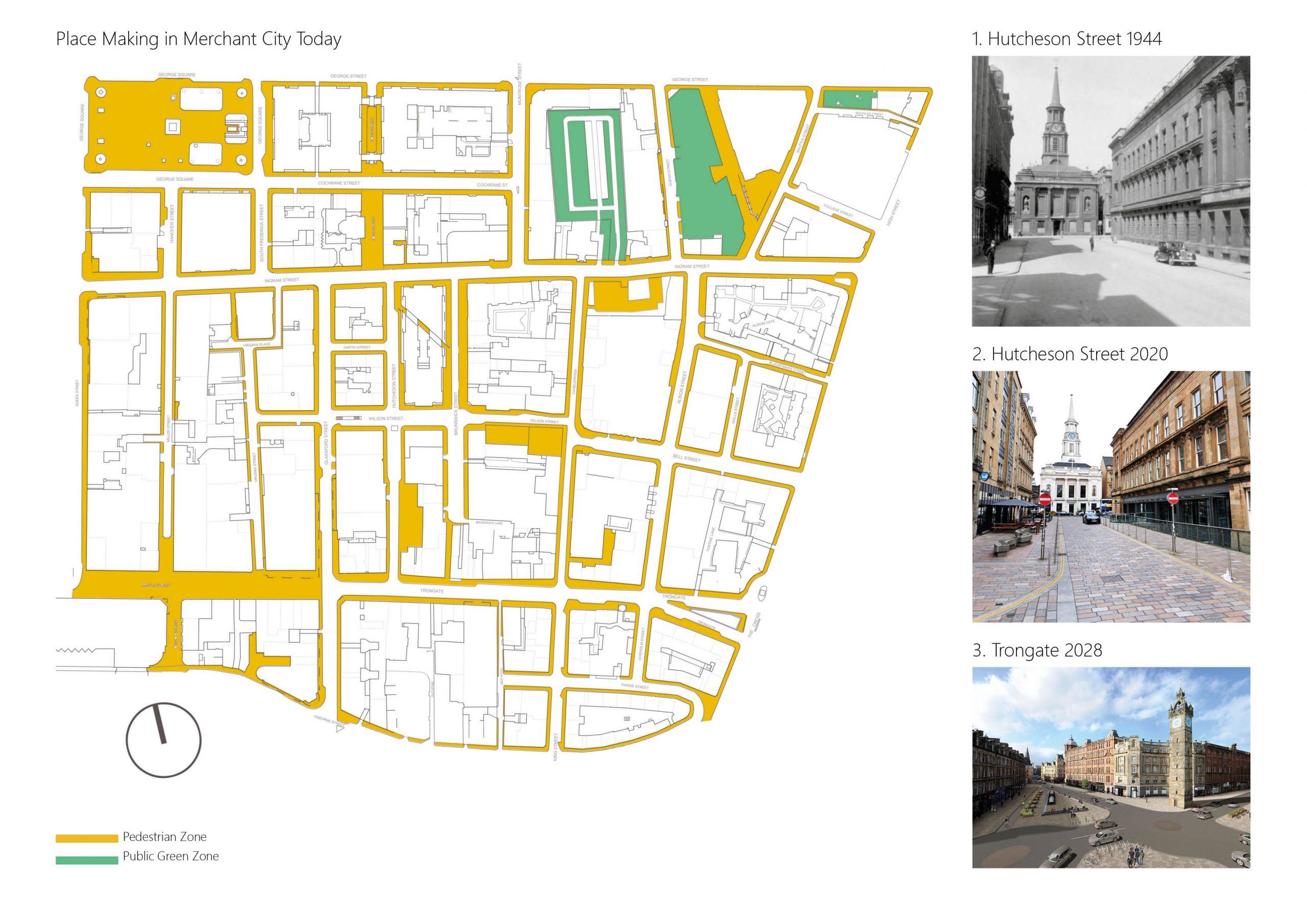Merchant city is the richest district in Glasgow in terms of history and culture. In 1860s Glasgow became the Second city of the Empire in trade and industry. Foundries, mills, mines and shipyards polluted the district with smog and attracted people from all over the country. Extreme jump in population came with overcrowded accommodation which contributed to extremely low and unsanitary living conditions.
Glasgow City started building new tenements and residential schemes to deal with overcrowding. However, it wasn’t until later, that resources allowed to invest in public place making. The city built public squares, parks and improved the streetscape in Merchant City. Grand Victorian parks provided space to socialize and participate in recreational activities; public squares offered the opportunity to gather and celebrate; and streetscape became more pedestrian friendly, accommodating natural social occurrences. Today we notice a strong focus on streetscape architecture and how it accommodates day to day activities, and what impact it has on the quality of urban life. Materiality and furnishings are carefully designed to encourage social gathering while at the same time discouraging antisocial behavior. Rough and textured surface, odd form or uncomfortable angles and heights of resting furniture not only limit antisocial behavior, but also discourage more vulnerable members of society to use the space.
Today Glasgow City is working towards better placemaking and streetscape for people. An inclusive design for city center(to be completed by 2028) can be found here: https://www.glasgowcitycentrestrategy.com/project/city-centre-avenues.
- Mitchell Library Archives
- Civic Engineers ‘Avenue’ brochure
Key Themes: Community

